Rating of the most dangerous natural wonders of the world
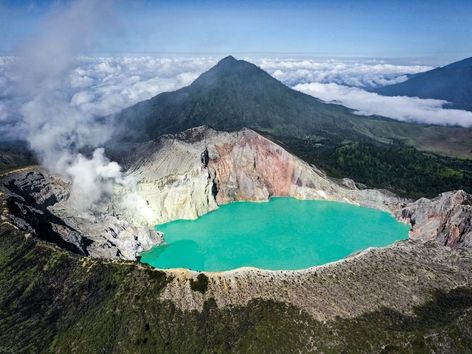
For most of us, a vacation is an opportunity to rest and relax our bodies and minds. But some daredevils want to challenge themselves and test their strength. Learn more about the most dangerous natural attractions in the world
Many popular tourist attractions that seem completely safe can actually pose a threat to tourists. This is especially true of natural locations, where danger can be caused by various factors: toxic fumes or deadly heat. Every year, these places attract crowds of visitors who are not even aware of the possible threats.
The Daily Mail has created a list of nine of the most dangerous natural attractions in the world that tourists should approach with extreme caution. It is always important to be informed and cautious when visiting such places.
Darvaza Crater, Turkmenistan
The burning gas crater, known as the “Gateway to Hell,” is an impressive and dangerous natural attraction in Turkmenistan. This 30-meter deep and 40-meter wide crater was formed as a result of natural gas drilling by the Soviet Union. During drilling, the upper layers of soil collapsed, creating a large hole filled with gas. To avoid gas poisoning of the local population and livestock, geologists set it on fire, hoping that the fire would subside in a few weeks. However, the crater has been burning for almost 50 years.
In November 2013, Canadian researcher George Kurunis discovered unique bacteria that survive at the bottom of the crater despite the high temperature. To collect soil samples for DNA analysis, Kurunis and his team used fireproof ropes and special suits with self-contained air tanks.
Every year, thousands of tourists come here to see the fire pit and take impressive photos. Although the crater is one of the main tourist attractions in Turkmenistan, it also contributes to environmental degradation due to the emission of large amounts of harmful methane into the atmosphere.
Naica Crystal Cave, Mexico
Located at a depth of 300 meters below the city of Naica in the state of Chihuahua, Naica Cave is known for its stunning white gypsum selenite blocks. These crystals, which grew at a snail's pace over hundreds of thousands of years, have reached a height of over 9 meters. They were formed by the cooling of superheated water saturated with gypsum, which caused the crystals to form over time.
One of the main problems faced by scientists wishing to study the cave is the high temperature. A hot spring located near the Crystal Caves causes elevated temperatures, which limits the stay in the cave to ten minutes. Canadian researcher George Kurunis is one of the few people who dared to enter the cave. He notes that the air temperature inside reaches 50°C, and the relative humidity is close to 100%, which makes it feel as if the temperature is 105°C. Kurunis and his team used special suits filled with ice to enter the cave and conduct brief research.
Kawah Ijen volcano and sulfur mine, Indonesia
The Ijen volcano in East Java hides the world's largest acidic volcanic crater lake, which is striking in its turquoise color. This active volcano is also known for its rich sulfur deposits, which are mined in quarries. Ijen eruptions are extremely dangerous due to the risk of the lake drying up, which can cause catastrophic lahars - destructive mudslides on the slopes of the volcano.
The bottom of the Ijen caldera is mostly covered with coffee plantations, and tourists are attracted by waterfalls, hot springs, and stunning volcanic landscapes. Despite this, it is worth remembering that working in the Ijen area is associated with harsh conditions that shorten the life expectancy of workers. They work in the depths of the mines wearing only T-shirts and pants, despite the toxic fumes and molten sulfur that heats up to temperatures of over 115°C.
One of the main dangers is the deadly turquoise-blue lake that covers most of the crater floor. This lake consists almost entirely of sulfuric acid, which can instantly kill anyone who falls into it.
Slot Canyons, Zion National Park, USA
In the slot canyons of a national park in Utah, a flash flood in 2015 killed seven tourists. The group was on a day trip through the narrow Keyhole Canyon, where they had to swim across several bodies of water and descend steep slopes. Although the tourists had received permission to travel, weather warnings were in effect at the time.
The National Weather Service predicted a 40 percent chance of rain and a risk of flash flooding. This case emphasizes the importance of following weather warnings and exercising caution when visiting natural locations, even if you have official permission.
Kaaterskill Falls, New York, USA
This waterfall is considered one of the most dangerous natural wonders in the world. In recent years, many people have died here, in particular, while trying to take a selfie. The New York State Department of Environmental Conservation has taken steps to reduce the number of fatalities. They added an observation deck, handrails, warning signs, and a bridge.
However, despite these measures, there is still concern that the area is still dangerous for those seeking to take a good picture. Visitors should be especially careful when near the waterfall and not put themselves at unnecessary risk.
Planning a trip or move abroad? An important part of a successful trip is an insurance policy, as it guarantees high-quality medical care anywhere in the world and can protect you from unnecessary expenses while travelling. You can buy insurance from trusted agents on the Visit World portal.
Danakil Desert, Ethiopia
This natural location is considered to be one of the most extreme on the planet and has even been called the “most violent place on Earth”. Despite the presence of powerful volcanoes, high temperatures, toxic gases, and dangerous land masses, this place attracts numerous extreme tourists. Companies specializing in adventure tours offer travelers to visit this area, which is one of the most unstable on the planet.
One of the main attractions is the huge sulfur lake, which Africans call the Yellow Lake because of its bright color caused by the high sulfur content in the volcanically active region. Another prominent location is Erta Ale, a basalt shield volcano with an active lava lake that is constantly erupting. One of its pits is called the “gateway to hell”.
Near the volcano are incredible salt flats. Due to the lack of life, as the salt kills vegetation, this region seems completely alien.
Khumbu Icefall, Nepal
The Khumbu Glacier on the route to Everest is often mentioned in the news because of the dangers associated with crossing it. This is a constantly changing ice space where climbers have to move through cracks on rickety ladders, under overhanging glaciers up to 10 floors high.
Although several climbers have died here after falling into crevasses, avalanches pose the greatest risk in the area. Despite the danger, the Khumbu Icefall remains an integral part of the route to the top of Everest, testing the strength of even the most experienced climbers.
Trolltunga, Norway
Trolltunga, or “troll's tongue,” is one of the most popular attractions in Norway, especially in the Instagram era. This impressive rock formation juts out 700 meters above a sparkling blue lake, attracting many tourists who want to take a unique photo.
However, Norwegian rescue services are often called to Trolltunga because many visitors underestimate the length and difficulty of the climb. In addition, there have been several fatalities among tourists who tried to climb the rock without proper training.
Cave of Death, Costa Rica
At first glance, Cueva de la Muerte looks like an ordinary cave with a rock canopy and scattered leaves at the entrance. However, curious tourists are stopped by a warning sign with the image of skulls and crossed bones and the inscription: “Danger! No entry beyond this point”. This cave is located on the territory of the Recreo Verde tourist complex, is only 2 meters deep and 3 meters wide, but is deadly.
The reason for the danger is the high level of carbon dioxide that fills the cave. Once inside, a person can almost instantly lose consciousness due to gas poisoning, which leads to respiratory failure. Fortunately, fatalities are rare here thanks to warning signs and the fact that the cave is too small for humans to enter.
However, small creatures such as snakes, birds, and rodents often die when they unwittingly enter the cave in search of food. The exact source of the carbon dioxide is unknown, but some scientists suggest that it is of volcanic origin. Despite its danger, Cueva de la Muerte remains a mysterious natural attraction that attracts the attention of both tourists and scientists.
Are you planning to travel or move abroad? An important component of a successful trip is a travel insurance policy, because it guarantees the provision of high-quality medical care in any corner of the world and is able to protect you from unnecessary expenses during the trip. You can buy insurance from verified agents on the Visit World portal.
Products from Visit World for a comfortable trip:
Travel guide for 200 countries;
Legal advice from a local specialist on visa and migration issues;
Travel insurance around the world (please select the country of interest and citizenship to receive services);
Medical insurance all over the world.
We monitor the accuracy and relevance of our information, so if you notice any errors or inconsistencies, please contact our hotline.
Recommended articles
3 min
Travels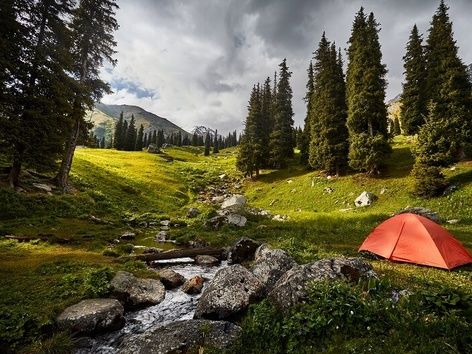
The best campsites for a relaxing vacation in Europe
You will find a lot of adventures and entertainment in places where there are no highways yet. In search of relaxation and silence, people drop everything, pack up their tent and go camping. Find out more about how to organize a camping trip and where the best campsites in Europe are located
24 May. 2024
More details2 min
Travels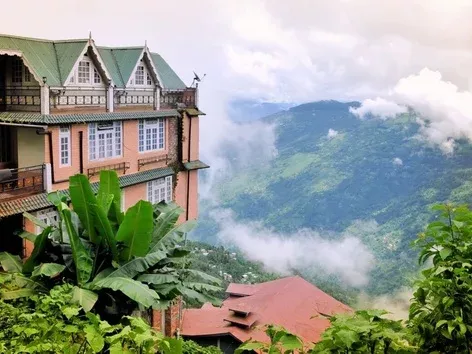
Not everyone enjoys traveling in summer, in particular because of the heat and the large number of tourists in popular locations. We're going to tell you where you can go this summer to hide from the scorching sun, enjoy the coolness and incredible scenery without crowds
23 May. 2024
More details3 min
Expats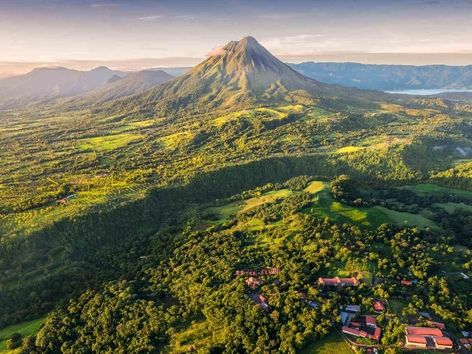
Costa Rica vs Panama: which country to choose for living and vacation?
Costa Rica and Panama are wonderful countries in Central America that will definitely surprise you with a wealth of wildlife, stunning beaches, incredible entertainment and the endless coastline of the Pacific Ocean and Caribbean. Find out more about the peculiarities of living and vacationing in Costa Rica and Panama in 2024
30 May. 2024
More details2 min
Travels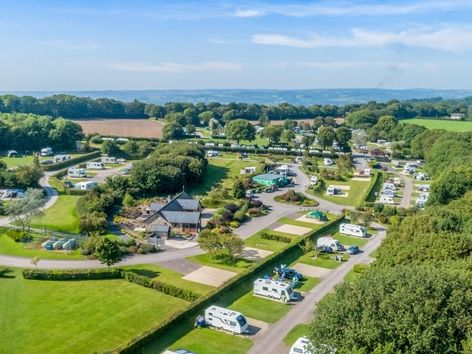
Outdoor recreation: the best campsites in the UK
Traveling with a tent, enjoying the outdoors, cooking in absolute unity with nature... What could be better for your active summer vacation? Find out more about the best campsites in the UK where you can enjoy nature and relax your body and mind
01 Jun. 2024
More detailsAll materials and articles are owned by VisitWorld.Today and are protected by international intellectual property regulations. When using materials, approval from VisitWorld.Today is required.
